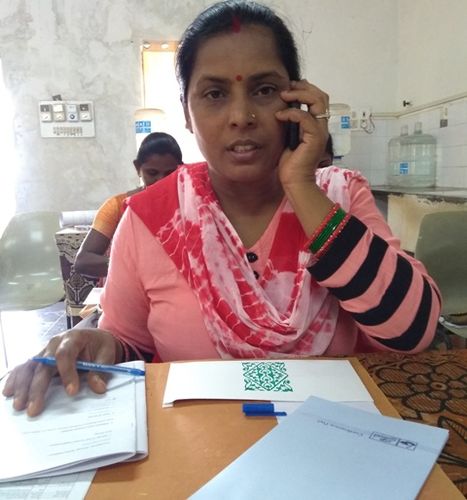
This scarf is made from eri silk. The silk worm has already left the cocoon before processing. In Little Flower Leprosy Rehabilitation Centre the empty cocoons are boiled to release the fine silk threads which are then hand spun, dyed and hand woven and into gorgeous scarves and stoles.
Because the cocoon is empty the silk threads are broken and joined again during hand spinning creating slubs of texture unique to each piece.
Standard sizes:
Width-50cm x Length-200cm
&
Width-28cm x Length-180cm other sizes available on request
Materials: 75% handspun eri silk 25% mulberry noil millspun silk
Price: Silk_Scarves_Price_List_Corrected
Care: Gentle hand-wash or dry clean.
Made in Little Flower.
***************************************************************************************Little Flower Workshop

Little Flower Leprosy Rehabilitation Centre is in Raxaul, Bihar, N. India. Men and women hand spin silk yarn, and then weave it into scarves and throws. They also weave cotton fabric for scarves and napkins and towels.
The center provides vital employment for people who would otherwise find it very difficult to find work because of their association with leprosy.
Little Flower buys eri silk cocoons from small farmers in Assam. Traditionally eri silk worms are extracted from the cocoon so there is no silk worm destroyed in the production of this silk. The cocoons are degummed in boiling water and washed and then spun by hand into thread for weaving. Using those hand spun threads to weave fabric creates gorgeous, slubby textured cloth.
For more details about Little Flower click here
Impact
Many of the artisans in Little Flower are family members of people affected by leprosy. Sita Devi is one example.
She joined the department and was asked to learn spinning of silk from the silk cocoons.
“My father-in-law was furious with me for going to work and locked me out of the house for two days, Brother Christodas found out and convinced my father-in-law to let me work and live at home, but there was too much tension in the house because I had gone against his wishes and eventually the colony elders allocated a separate house for my husband and me and our children.”
“I worked for a while on the colony farm but I could not keep the children with me in the rain and so I returned to the weaving unit. I had to work hard to keep up the number of pieces per day as we were paid piece rate.”
Now Sita is one of the supervisors in the unit responsible for monitoring production. Read more about Sita here.

